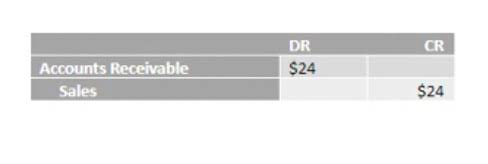Mastering The Statement Of Shareholder Equity: A Comprehensive Guide
Букмекерская Компания Mostbet Подготовила Несколько Полезных Советов По Ставкам На Спортивные Единоборства
April 13, 2022Вывод Средств Спортбет Mostbet Как Вывести Деньги Со Счета Букмекерской Конторы Sportbet Мостбет
April 14, 2022
Long-term liabilities are debts that must be repaid over a period of more than one year (for example, bonds payable, leases, and pension payments). Long-term assets are those that cannot be converted to cash or used in less than a year (for example, investments, property, plant, and equipment, and intangibles such as patents). Current assets (cash, accounts receivable, inventory) are assets that can be converted to cash within a year.
Get Weekly 5-Minute Business Advice

Adam received his master’s in economics from The New School for Social Research and his Ph.D. from the University of Wisconsin-Madison in sociology. He is a CFA charterholder as well as holding FINRA Series 7, 55 & 63 licenses. He currently researches and teaches economic sociology and the social studies of finance at the Hebrew University in Jerusalem. Shaun Conrad is a Certified Public Accountant and CPA exam expert with a passion for teaching.
- For example, the SCF for the year 2023 reports the major cash inflows and cash outflows that caused the corporation’s cash and cash equivalents to change between December 31, 2022 and December 31, 2023.
- For example, if a company sold 1 million shares at $10 each, it has $10 million in share capital, no matter the current stock price.
- Stockholders’ equity might include common stock, paid-in capital, retained earnings and treasury stock.
- My Accounting Course is a world-class educational resource developed by experts to simplify accounting, finance, & investment analysis topics, so students and professionals can learn and propel their careers.
Components of Stockholder’s Equity Statement
- This is the date on which the actual dividend is received by the shareholder.
- Learn about the differences between assets and revenue with examples of each and why both matter to investors.
- The Statement Of Shareholder Equity shows the value of a company after investors and stockholders have been paid out.
- Current liabilities are debts typically due for repayment within one year, including accounts payable and taxes payable.
- Some people also subtract the corporation’s cash dividends when the dividends are viewed as a necessity.
- Note that the company had several equity transactions during the year, and the retained earnings column corresponds to a statement of retained earnings.
Preference investors have a https://x.com/BooksTimeInc greater claim on the company’s earnings and assets than common stockholders. They will be eligible for dividend distributions before common investors do. This represents the profit or loss during the period as reported in the statement of comprehensive income and is attributable to stockholders.
A statement of shareholder equity can help you make financial decisions.
In case of liquidation, common stockholders will be paid only after settling the outside liabilities, then bondholders and preference shareholders. Stockholders’ equity is the company that has settled the value of assets available to the shareholders after example of statement of stockholders equity all liabilities. It provides information relating to equity-related activity to the users of financial statements and it is one of the financial elements used by analysts to understand the company’s financial progress. In contrast, the cash flow statement — or statement of cash flows — tracks the changes in a company’s cash and cash equivalents over a period of time. The difference between the statement of owner’s equity and the cash flow statement (CFS) is that the former portrays the changes in a company’s equity over a period in more detail. As a company issues new preferences and equity stock, it will be shown in the statement of stockholders’ equity.

Why You Can Trust Finance Strategists

The preference stock enjoys a higher claim in the company’s earnings and assets than the common stockholders. They will be entitled to dividend payments before the common stockholders receive theirs. It is the amount of money earned through a company’s income, but not yet dispatched to shareholders. If the amount is high, it determines that the company has made quite an amount of retained earnings and is https://www.bookstime.com/ considered profitable. It represents the funds raised by a company from selling shares to investors, whether common or preferred stock or, alternatively, understood this way, the amount the reporting company gains from transactions with shareholders.
Note that the $95,000 appears as a negative amount because the outflow of cash for capital expenditures has an unfavorable or negative effect on the corporation’s cash balance. The $15,000 is a positive amount since the money received has a favorable effect on the corporation’s cash balance. The $30,000 received from selling an investment also had a favorable effect on the corporation’s cash balance. They are both taken from corresponding and comparing figures of the statement, which will then be shifted to the statement of stockholders’ equity. Retained earnings are simply the net income or loss that the corporation generates minus any distribution of dividends to stockholders since the corporation was formed.
